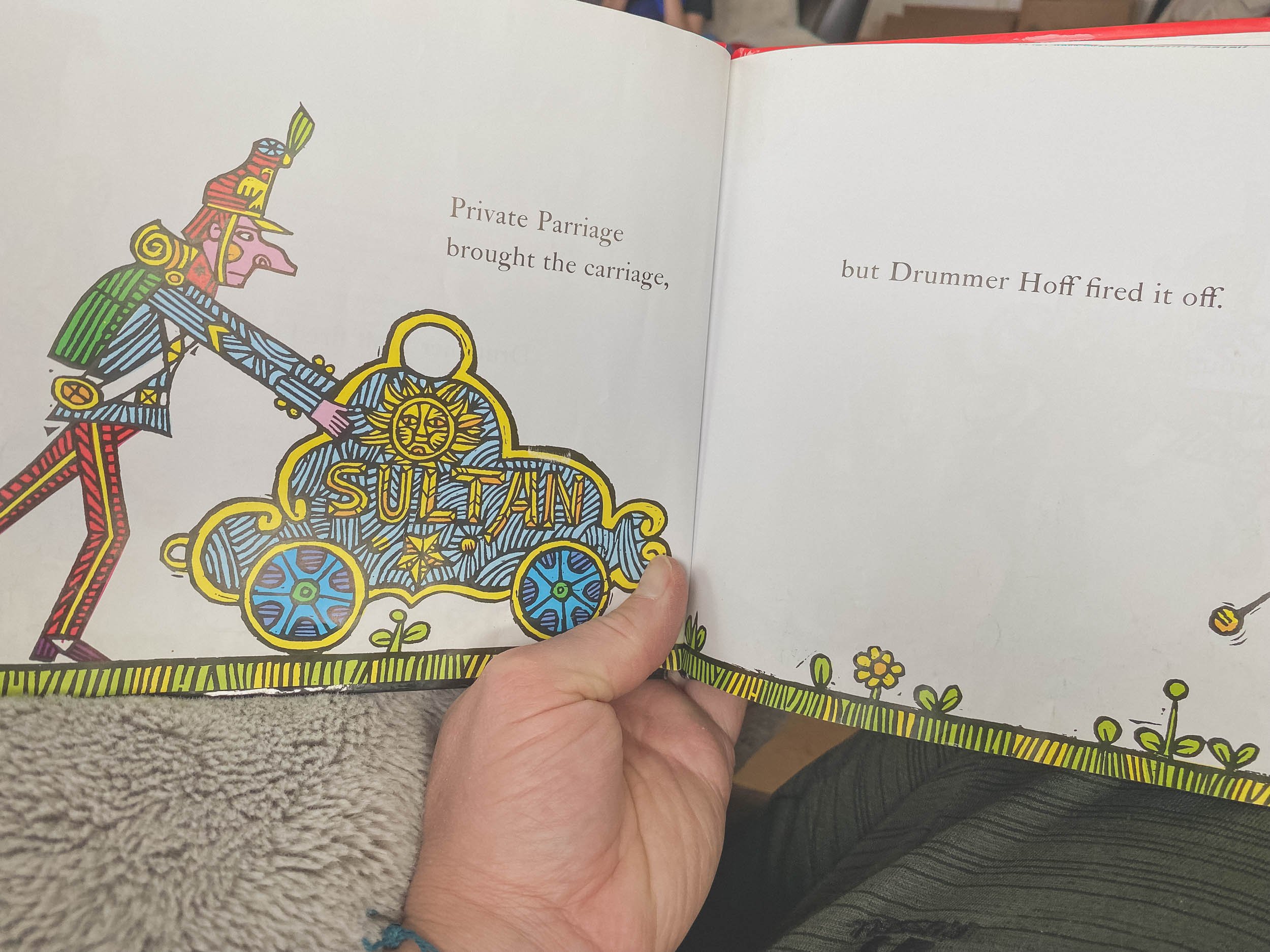Caldecott Books : The poetry, colors & rhythm of Drummer Hoff (1967).
Drummer Hoff
Written by Barbara Emberley, illustrated by Ed Emberley
1967
woodcuts
I have fallen in love with poetry the last few years.
I stumbled across Mensa’s A Year of Living Poetically, and it opened the floodgates; provided an opening to poetry appreciation that has paid off in so many ways. We are currently finishing memorizing Yeats’ Aedh Cloths of Heaven, and, and…what does this have to do with a 1967 Caldecott-winning picture book filled with wild, colorful woodcut illustrations of men going off to war?
This is the connection: but first, one more aside:
I cannot over-read aloud ee cummings [i carry your heart with me(i carry it in] enough.
From the title to each line by line, I savor and savor and savor both the content and the style; the delicious rhythm and beat of saying these lines again and again.
here is the deepest secret nobody knows
(here is the root of the root and the bud of the bud
and the sky of the sky of a tree called life;which grows
higher than soul can hope or mind can hide)
and this is the wonder that's keeping the stars aparti carry your heart(i carry it in my heart)
Reading and saying this poem aloud makes my heart happy and my face smile.
Barbara and Ed Emberley’s Drummer Hoff does the same thing.
It’s adapted from an old Mother Goose rhyme (“John Ball Shot Them All”) and is essentially a progressive build-up of military fellows heading off to do something.
Private Parriage brought the carriage, but Drummer Hoff fired it off…
Captain Bammer brought the rammer…
General Border gave the order…
And finally - spoiler alert - theres’ a big KABOOM!
It is deceptively simple and it is deceptively delicious. You must, you must read aloud, and you must, you must read more than once.
As somebody who loves history, I was also curious about the context in which this was written. In other words, this is a book filled with military uniforms and boom-boom stuff and war imagery, and then we end up - spoiler alert - with a big blast on the penultimate pages, followed by a calm, serene, pastoral illustration at the very end.
My brief sleuthing uncovered various interpretations of the messaging - is it an anti-war book? But the Emberleys, to my understanding, have resisted attempts to give it a moral or message.
And there’s something beautiful about that. I think that sometimes there’s something lost today about what stories should be. There’s wonderful conversations to be had about separating the author from a work (in any discipline) and what happens when an author releases their creation into the wild. At this point, it becomes its own thing, open to interpretation, and the weight of importance placed upon it.
But there’s something beautiful about the Emberleys’ insistence that this is a playful rhyme, rendered boldly.
In other words, it entertains. There’s a cannon, there’s a big frenetic lead-up to it exploding, there’s a meadow; nature at the end. All kinds of allegories or parables or meanings to be pulled, whether the Emberleys intended for there to be anything more or not.
But at its core, its colorful pictures matched up with a colorful sequence of words that exists as art, as standalone, enjoy it for what it is, nonsensical if you want, art.
I still do Ring Around the Rosie and London Bridge is Falling Down. Are there deeper contexts and dark meanings to the roots of these rhymes and songs? Yes.
Yes. But yes, like most art - almost all art - the meaning is ripped away from its creators hands the instant it leaves. So maybe there’s something more, and maybe there’s not. It’s contextual.
And we can all enjoy this little book with big pictures and repeating words for what it is: catchy, fun, and a respite from solemnity.











